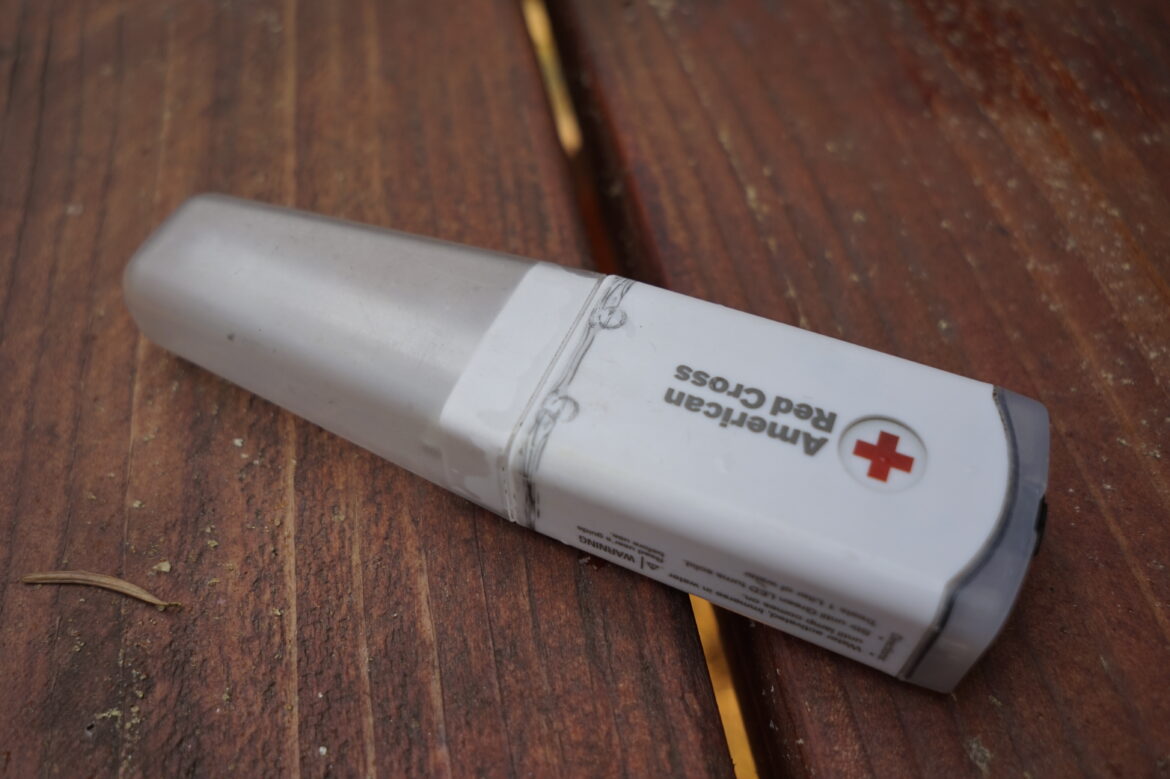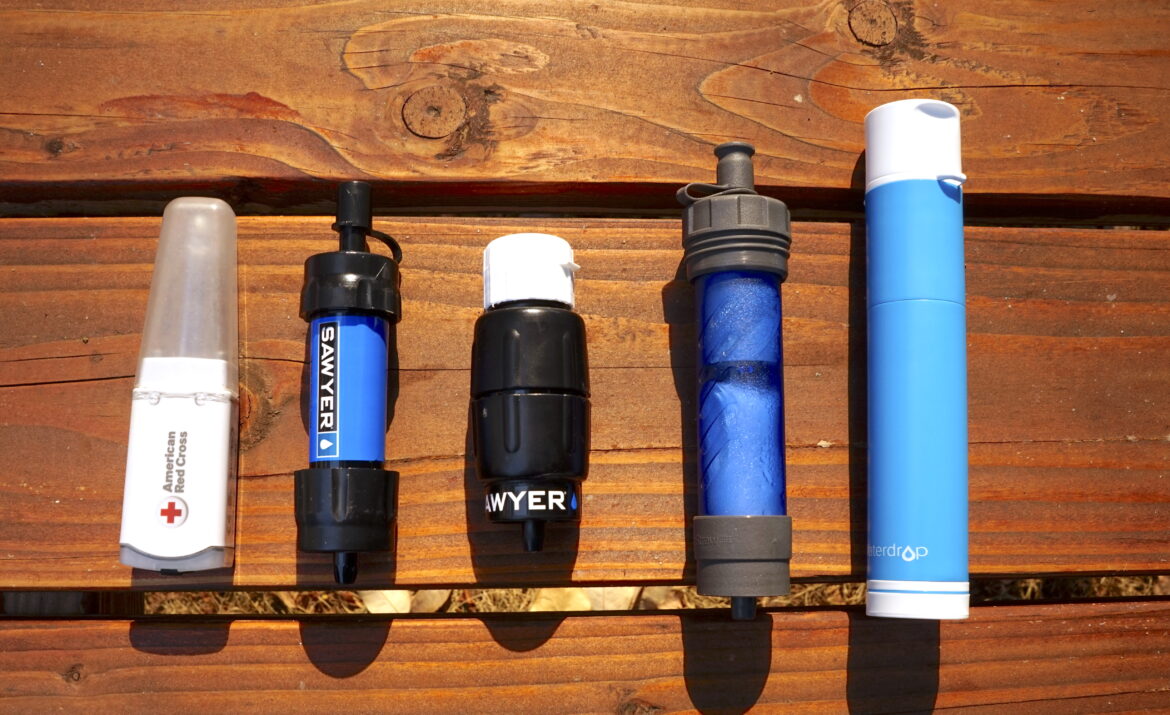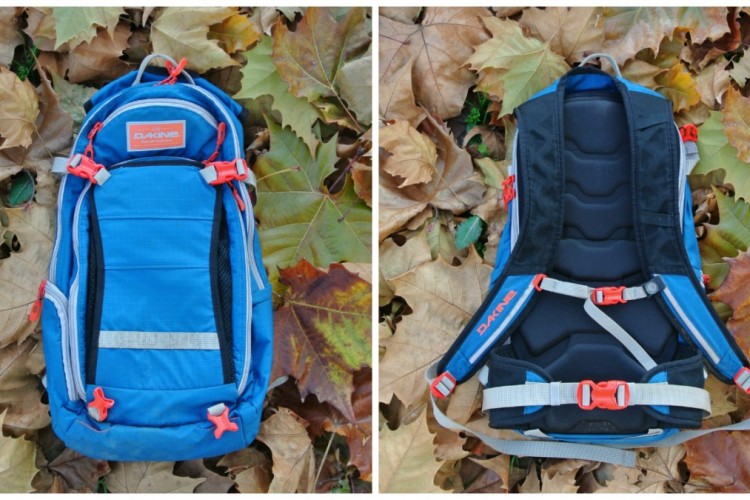
Bikepacking or bikecamping, gravel riding, and backcountry exploring are experiencing a massive surge in popularity. It’s like the millennial generation’s recreational back-to-the-land movement. We enjoy the urban lifestyle during the week but when it comes to the weekend, we’re off into the land of no pavement, no reception, no civilization, and thus, no amenities.
If you’re thinking of heading into the backcountry on two wheels, you may want to invest in a water filtration or purification system. Sure, you can carry all the water you may need, but that gets heavy and cumbersome quickly. And drinking straight from a river, lake, or stream is ill-advised. Even the clearest water can be teeming with bacteria.
Luckily, portable systems have come a long way. Not only are they highly effective in making the water human-safe, they’re also lighter and more compact than ever before.
Water filtration and purification systems are commonplace in the hiking market already, and there are lots to choose from. Prioritizing compactness, weight, and simplicity, I chose to review systems with the fewest number of attachments while also considering the limited space of a waist pack or backpack. This meant excluding pump or gravity-bag based systems, which are efficient for filtering larger quantities of water but they’re also quite bulky.
Also, a quick note on the difference between purification and filtration. Water filters, like the majority of the systems reviewed here, will effectively filter out 99.99% of bacteria (like E. coli) and protozoa (like Giardia). They won’t, however, filter out viruses (like hepatitis). If you’re traveling in North America or Western Europe, this isn’t a concern. But if you’re traveling in some developing countries, you’re going to want to back up your filtration with a Dioxide pill or a SteriPen as mentioned below.
Systems included in this review
- SteriPen American Red Cross UltraLight UV Water Purifier, $89.95
- Lifestraw Flex, $34.95
- Waterdrop Portable Camping Filtration System, $28.99
- Sawyer Micro Squeeze Filtration System, $28.99
- Sawyer Mini, $22
- Sawyer Squeeze Kit, $39.95
SteriPen American Red Cross UltraLight UV Water Purifier

I included the SteriPen in this review because before starting this project, this SteriPen had been my personal go-to for bikepacking and backpacking trips.
It’s about the size of a multitool and thus, easily fits in your hip pack, bag, or even jersey pocket. It’s the smallest in the bunch and it’s also the only purifier included in this review, which means it kills bacteria, protozoa, and viruses.
However, it’s also the only device in this review that’s battery-reliant and partially made of glass and therefore potentially fragile. If you run out of battery or somehow break the device, you’re well… S.O.L and left hoping for a strong stomach.
I am therefore hesitant to fully recommend it for trips in the far backcountry if you don’t have a backup or buddy whose water filtration or purification system you can borrow.
With that said, I personally haven’t experienced any breakage or electronic failures myself, and this little UV light seems to be going strong.
How it works
The SteriPEN relies on a short wave UV light to purify water. The UV light disrupts the DNA within bacteria, viruses and protozoa, preventing them from reproducing, and thereby making the microbes harmless and safe for human consumption. In clear water the SteriPEN will destroy over 99.9999% of bacteria, 99.99% of viruses and 99.9% of protozoa.
How to use it:
- Make sure the internal battery is fully charged (this model charges via micro USB).
- Remove the clear cap.
- Place the lamp in water.
- Once the metal water sensors are submerged, the UV lamp will automatically turn on.
- Stir until the green LED turns from flashing to solid — about 90 seconds.
- The light turns off when removed from the water.
- Wipe the lamp clean, put the cap back on and you’ll have another 7999 activations before needing a bulb replacement.
Pros:
- Extremely compact, simple device
- Relatively quick treatment time (1L in 90 seconds)
- Lightweight (just 2.6 oz)
- No pumps or squeeze bags of accessories required
- No chemical aftertaste
- UV lights kills bacteria, protozoa and viruses
- USD rechargeable
Cons:
- Battery reliant
- Partially made of glass and potentially breakable
- Requires a wide opening to effectively stir the water
- Max 1L water volume
- Does not remove sediment
⭐️ Available online at Amazon.com.
Lifestraw Flex

The Lifestraw Flex, like all the other products reviewed below, is a small but highly versatile filter. With its 28mm screw-on capability, the filter is compatible with a wide range of standard plastic bottles and water bladders. It can also be used inline with a hose-based hydration system, hooked up to a gravity bag, or used as a straw to drink straight from a stream.
The filter comes with its own 22oz. soft-bottle, which can either function as a squeeze bag to transfer stream water into your bike bottle or bladder, or one could drink straight from the filter.
Out of the packaging, I was immediately impressed with the softness and sturdiness of the squeeze bag. It’s unlike any other squeeze bag I’ve tested. However, I was surprised to learn that the filter goes inside the squeeze bag, limiting not just the volume but also the ability to fully squeeze all the water out through the filter. This definitely proved to be a problem in testing, and unfortunately, the connection between the bag and filter was also a bit leaky.
The filter itself seemed to work just fine. The filtered water was clear and tasted good, but the flow was slower compared to some of the other squeeze bag systems reviewed. It was rather tough to drink water straight from the filter as well, and while the inline compatibility with a hydration bladder is a great option, especially for mountain biking, the flow of water is just a bit too slow for my liking. You have to suck rather hard to get water through the hose.
Also note that because of the filter’s placement inside the squeeze bag, it took two fillings of the squeeze bag to yield 16 ounces of filtered water as I was unable to squeeze all the water through the filter.

How it works
The Flex is a two-stage filter. There’s a microbiological hollow fiber tube to filter out 99.999% of all bacteria and parasites and an activated carbon capsule that protects against lead, chlorine, and sediment while also improving the taste. The microbiological filter has a 500-gallon lifetime while the carbon capsule lasts 25 gallons.
The filter is cleaned through backwashing with a syringe and the bag can be rinsed with clean water.
How to use it
As described above, the filter can be used in various ways, but on the bike, the squeeze bag approach is the most commonly used.
- You fill the squeeze bag with water from your source
- Screw the filter on
- Squeeze the water through the filter into your own bottle or bladder
- Alternatively, you can drink straight from the filter
Pros:
- Lightweight
- Soft and durable squeeze bottle
- Inexpensive
- Versatile uses
- BPA free
Cons:
- Leaky
- Filter goes inside the squeeze bag
- Slow flow rate
⭐️ Available at REI, Moosejaw, and Amazon.
Waterdrop Water Filter Straw

At seven inches long, the Waterdrop Filter Straw is the largest of the filters in this review yet it’s also arguably the most affordable as it ships with several accessories. Depending on which package you buy, the filter comes with several squeeze bags and/or a full gravity bag — all under $30.
Like the Sawyer and Lifestraw filter, the Waterdrop Water Filter Straw is a screw-on system compatible with most water or soda bottles. It comes with its own 20oz. squeeze bottles and can be hooked up to a gravity bag system as well. One could also use it as a straw to drink straight from a water source. With its sippy-cup-like mouthpiece, it cannot, however, be used inline with your hydration bladder and hose system.
The squeeze bags are made of a rigid, tear-prone plastic which feels like it would tear over time. The volume of 20oz. is also smaller than most squeeze bags out there.
However, the filter did ship with several bags and the little carabiner clip is a nice added touch.
The connection between the filter and provided squeeze bag was good yet when mounting the filter to a plastic water bottle, there was some slight leakage. Chances are, however, that you wouldn’t likely be using a disposable plastic water bottle on your mountain bike rides and so this wouldn’t be an issue.
The water flow rate was better than Lifestraw but not as good as the Sawyer filters. The filter works well. The water tastes good and comes out clear and sediment-free. I kind of like the shaped mouthpiece too and the fact that you don’t have to backwash the filter with a syringe just means one less item to carry, which is a definite plus.
How it works
The Waterdrop Water Filter Straw is a four-stage filtration system. The water enters through a pre-filter fabric which removes contaminants, then moves through a hollow fiber membrane which filters out the bacteria and protozoa. This is followed by an activated carbon-fiber capsule to improve taste and smell and finally, there’s a polyester membrane at the end to remove any rust, sediment, and other particulates. The filter can be backwashed without a syringe, and the bag can be rinsed with clean water. The straw can provide safe drinking water up to 100,000 gallons.
How to use it
As described above, the filter can be used in various ways, but on the bike, the squeeze bag approach is the most commonly used.
- Fill the squeeze bag with water from your source
- Screw on the filter
- Squeeze the bag to push water through the filter into your own bottle or hydration bladder
- Alternatively, you can drink from the mouthpiece
Pros:
- Includes multiple squeeze bags
- Inexpensive
- Versatile uses
- BPA-free
- No need to backwash with syringe
Cons:
- Relatively low-volume squeeze bags
- Squeeze bags are harsh and will wear out
⭐️ Available online at Amazon.
Sawyer Systems

Sawyer has a big hold in the outdoor water filtration market and carries several different filters made with adventurers in mind. Reviewed here are the Sawyer Squeeze, Sawyer Mini, and Sawyer Micro.
While ranging in size, flow rate and volume, these filters are versatile in their application and can be used for several filtrations methods, including:
- Inline with your hydration bladder and hose system*
- With the provided squeeze bags
- In combination with a gravity bag*
- Screwed onto a 28mm disposable plastic bottle
- With a straw to drink directly from a water source
* The Squeeze needs an adapter to go inline with your bladder hose or gravity bag.
Arranged by when they were released, the Sawyer Squeeze is Sawyer’s original squeeze-bag filter system and also the biggest at 5.5″ in length and 3 ounces in weight. Then comes the 5″ Sawyer Mini which weighs about 2 ounces, and the newest addition, the 4″ Sawyer Micro, also weighing roughly 2 ounces.
The Sawyer Mini is easily the sleekest among the three filters as the other two are rather squat.
The Sawyer Squeeze can handle the most volume, has the fastest flow rate, and comes with a lifetime guarantee. The filter ships with two 32oz. Collapsible Pouches, inline adapters, a straw, and cleaning syringe. The Squeeze is made for the widest range of purposes — from everyday use on a faucet to hiking to emergencies.
The Mini and Micro are advertised as personal devices and were optimized for minimal weight and compact sizes. The Mini comes with the smallest squeeze pouch of all filters reviewed here as it holds a mere 16oz. of water. Perhaps the Mini’s primary use was to be inline with an hydration pack as the hose connector points are longest and no adapters are needed.
In size and flow rate, the Micro falls somewhere in between the Squeeze and the Mini, and comes with a redesigned pouch. Made of a softer yet stronger material than the standard Sawyer pouches, these weigh half as much while still sporting a volume of 32oz.
Unlike the Squeeze, the Mini and Micro filters are not guaranteed for life; instead they’re meant to last up to 100,000 gallons of water — which is still more water than any of us will ever drink, even with daily use.
Each one of these Sawyer filters worked flawlessly, yet I prefer the material of the Lifestraw squeeze bag over the plastic-y pouches that come with the Waterdrop and Sawyer products. These pouches will inevitably tear with frequent use. Nevertheless, they get the job done, roll up tightly, and Sawyer sells replacement bags in a variety of volumes should you tear a pouch.
Choosing one Sawyer model over another will come down to your intended use and priority of flow rate over size. If your primary use will be a filter inline with the tubing of your hydration pack, the Mini will be your best bet. The flow rate is slower than both the Micro and Squeeze but it’s also sleeker and is guaranteed to stay put inside your system. Of course, the Mini can still be used in the other filtration methods as well if you were to leave your hydration pack at home.
The Micro is a do-it-all device in a compact package, best for single person use of the squeeze bag method.
The Squeeze has the fastest flow rate and will also serve you well for off-the-bike activities. Due to its size and need for adapters, it’s not ideal inline with a hydration pack, but it’s the best filter when you need larger quantities of water. For example, if you’re bikepacking and cooking meals or you’re filtering water for more than one person.

How it works
The Sawyer water filtration systems use technology adapted from kidney dialysis filters. The Sawyer Hollow Fiber Membrane Filters are composed of tiny “U” shaped micro-tubes that allow water to enter into their core through tiny micropores on the sidewalls of the tubes. The 0.1 micron pores in these filters are so small that no bacteria, protozoa, or microplastics will pass through.
How to use it
As described above, the filter can be used in various ways, but on the bike, the filters are best used inline with the tubing of your hydration pack or with a squeeze bag.
Inline
- Use scissors to cut your hydration hose in two pieces
- Insert the connectors of the filter into the hose pieces; the Flow Arrow on the filter should point toward the mouth piece
- Fill the bladder with water from you source
- Close up the bladder and re-insert in your bag
- Drink from the mouthpiece as normal
Squeeze Bag Method
- Fill squeeze pouch with water from your source
- Screw on the filter
- Squeeze the water into your bottle or hydration bladder, or drink straight from the filter
Pros
- Squeeze bag and adapters included
- Low packing weight and volume
- Versatile uses
- BPA free
- Good flow rate
Cons
- Squeeze bags are harsh and will wear out
- No activated carbon filtration for improved taste or odor
⭐️ Compare Sawyer water filter models and prices.

Flow Rates, as tested
| Filter | Time to fill 16 oz bottle, in minutes |
| LifeStraw Squeeze | 3:25 (two fills) |
| Waterdrop | 1:34 |
| SteriPen | 1:30 |
| Sawyer Squeeze | 0:30 |
| Sawyer Micro | 0:50 |
| Sawyer Mini | 1:00 |
Final notes
These filtration systems are all effective and also quite similar in style. Choosing a filtration system really comes down to personal preference, end-use, and whether you’re prioritizing flow rates or compactness.
With that said, the Sawyer products stood out to me as they tick all the boxes: efficient flow rate, compact size, and versatility. Yet, if you’re riding in places where the water gets particularly murky or funky, I do like the added layer of activated carbon in both the Waterdrop and Lifestraw filters, which improves the taste and odor of the water.
Also, please note that hollow fiber filters don’t do well in freezing temperatures. The interior fibers could break. So fatbikers, if you’re headed out on a winter trip, keep the filter close to your body to prevent it from freezing, especially at night. And if you’re going to use a SteriPen, bring a backup just in case you run out of batteries.
Which water filter do you use? We’d love to hear from you in the comments below.
LifeStraw, Waterdrop, and Sawyer provided relevant product samples for testing.





















2 Comments
Oct 15, 2020
Oct 15, 2020